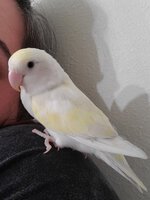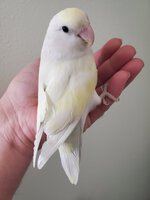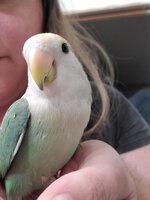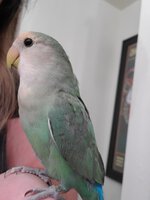Gypsysoul
Moving in
- Joined
- 5/30/21
- Messages
- 11
- Real Name
- Brianna
I am in need of some help identifying the mutation of my Archer. She is female, just recently had her first clutch with two sweet babies that hatched. I am thinking she may be creamino? She is mostly white with like an opaline yellow pattern and grey tips.on her wings, very faint turquoise on her rump.The breeder won't give me the time of day to answer me.
I only want to know because one of her babies seems to be albino or another mutation that would end up with red eyes and both babies have absolutely no black on their beaks since day one. The father, Bluebell I also put up a picture too. When we first got him he was blues and grey, not much green and no yellow. Now he looks to be Dutch blue or maybe seagreen?
I am super curious as to what mutation she is and what her babies may end up being.




I only want to know because one of her babies seems to be albino or another mutation that would end up with red eyes and both babies have absolutely no black on their beaks since day one. The father, Bluebell I also put up a picture too. When we first got him he was blues and grey, not much green and no yellow. Now he looks to be Dutch blue or maybe seagreen?
I am super curious as to what mutation she is and what her babies may end up being.






